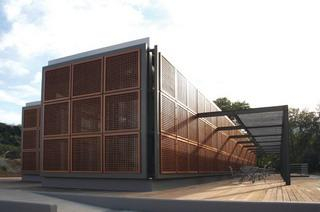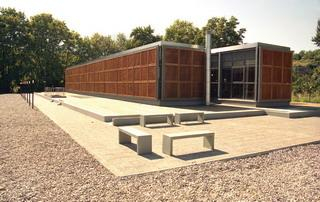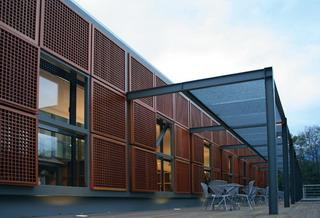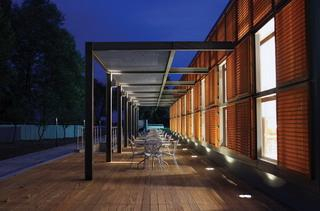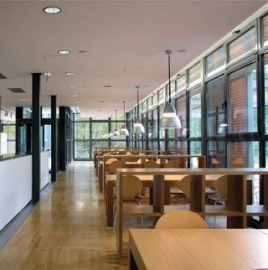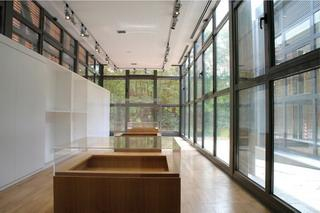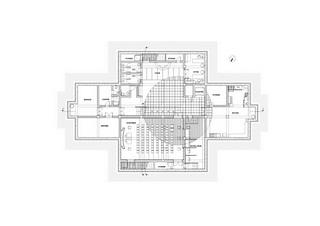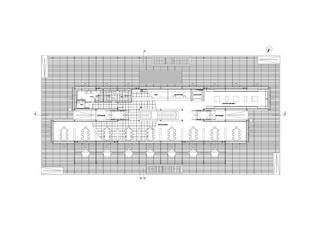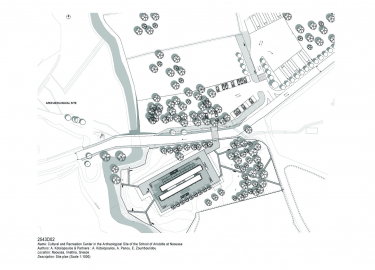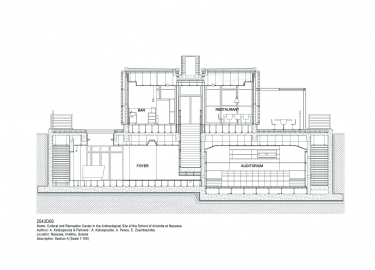Cultural and Recreation Centre - Archaeological Site of the School of Aristotle
Since the early 90's, the practice's members have been systematically concerned with sustainable and energy-saving architecture, either through designing underground buildings or through a series of projects focusing on the skin of the buildings as a climatic transformer.
This cultural and recreation center, donated by the late industrialist and ship owner Chr. Lanaras and his family to his home city of Naoussa, is situated close to an important yet almost unknown archaeological site of northern Greece. The site is known as the School of Aristotle and consists of a rocky balcony with small caves and with a magnificent view towards the Arapitsa river, surrounded by large trees.
The architects as well as the archaeologists involved in the project had the attitude that the neighboring archaeological site and the beauty of the landscape should lead to a building of simple geometrical shape and materials like wood - friendly to the environment.
So, the center was designed in order to guarantee a good view to the archaeological site, being at the same time almost invisible from that.
Taking this into account, the building has a total area of 900 sq. m. and a simple structure with part of the main spaces underground. In the ground floor, it contains the reception desk, the exhibition space, and a restaurant. In the basement, it contains a small auditorium (80 seats), the foyer with a skylight, the kitchen as well as service and storage rooms. There is also an open air space with wooden floor, suitable for the summer use of the centre, which reproduces the perimeter of the underground floor. Crucial part of this is the space on the north-west side of the building, which faces the archaeological site and is covered by a metal grid pergola.
The building consists of a steel (above ground) and concrete structure (below ground) creating a double linear rectangular volume, based on a 4X4X4 meters modular system. The two ground floor linear volumes are surrounded by a skin of aluminium windows and semi-transparent wooden shutters, which function as solar protectors, without obstructing the magnificent view from the inside to the archaeological site. Part of these shutters can be opened.
This is the second attempt by our practice for the total coverage of the outer surface of a building with a wooden skin (after the Ano Poli house). This skin functions as solar protector throughout the summer, without obstructing the breathtaking view to the unique landscape of the archaeological site, while at the same time allows the sun to enter freely during the winter.

